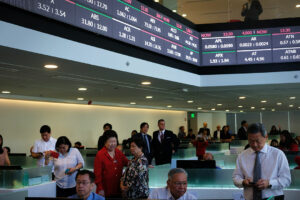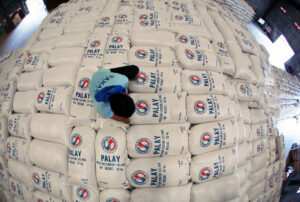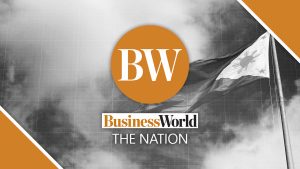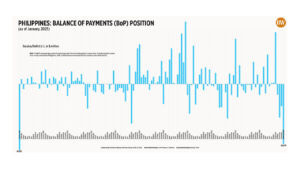Exit from FATF ‘gray list’ may lift Philippine stocks

PHILIPPINE STOCKS may advance this week as market sentiment is expected to get a lift from the country’s removal from dirty money watchdog Financial Action Task Force’s (FATF) “gray list” and after the central bank said it would cut banks’ reserve requirement ratios (RRR) next month.
On Friday, the benchmark Philippine Stock Exchange index (PSEi) climbed by 0.51% or 31.41 points to close at 6,098.04, while the broader all shares index dropped by 0.30% or 11.34 points to 3,660.28.
Week on week, the PSEi went up by 0.61% or 36.71 points from its 6,061.33 finish on Feb. 14.
“After dropping back to below 6,000 to open the week, the local bourse managed to recover as the first round of earnings releases started, but gains were capped as caution permeated,” online brokerage 2TradeAsia.com said in a market note.
For this week, Rizal Commercial Banking Corp. Chief Economist Michael L. Ricafort said the Philippines’ exit from the FATF’s gray list of jurisdictions under increased monitoring for money laundering risks could boost market sentiment.
The Philippines was on the FATF’s gray list for over three years or since June 2021.
The FATF Plenary and Working Group Meetings took place in Paris, France from Feb. 17 to Feb. 21.
The dirty money watchdog noted the Philippines’ “positive progress in addressing the strategic anti-money laundering and countering the financing of terrorism and proliferation financing deficiencies previously identified during their mutual evaluations.”
Mr. Ricafort added that the Bangko Sentral ng Pilipinas’ (BSP) announcement that it would cut banks’ RRRs further effective next month will also be positive for the market, as this would free up more than P300 billion in liquidity, which could be invested in equities.
On Friday, the BSP said it will reduce the RRR of universal and commercial banks and nonbank financial institutions with quasi-banking functions by 200 basis points (bp) to 5% from 7% effective March 28.
The central bank will also cut the RRR for digital banks by 150 bps to 2.5%, while the ratio for thrift lenders will be slashed by 100 bps to 0%.
The RRR is the portion of reserves that banks must hold onto rather than lending out. When a bank is required to hold a lower reserve ratio, it has more funds to lend to borrowers.
“Both of these developments… would support market sentiment and could increase investor confidence on the country going forward, a welcome development and one of the positive leads that the markets badly need recently, in view of the Trump factor that has weighed on the markets in recent weeks,” Mr. Ricafort said in an e-mail.
He placed the PSEi’s next support at 6,000 and minor resistance at 6,275-6,530.
For its part, 2TradeAsia.com put the market’s immediate support at 6,500 and resistance at 6,300-6,400. — S.J. Talavera




